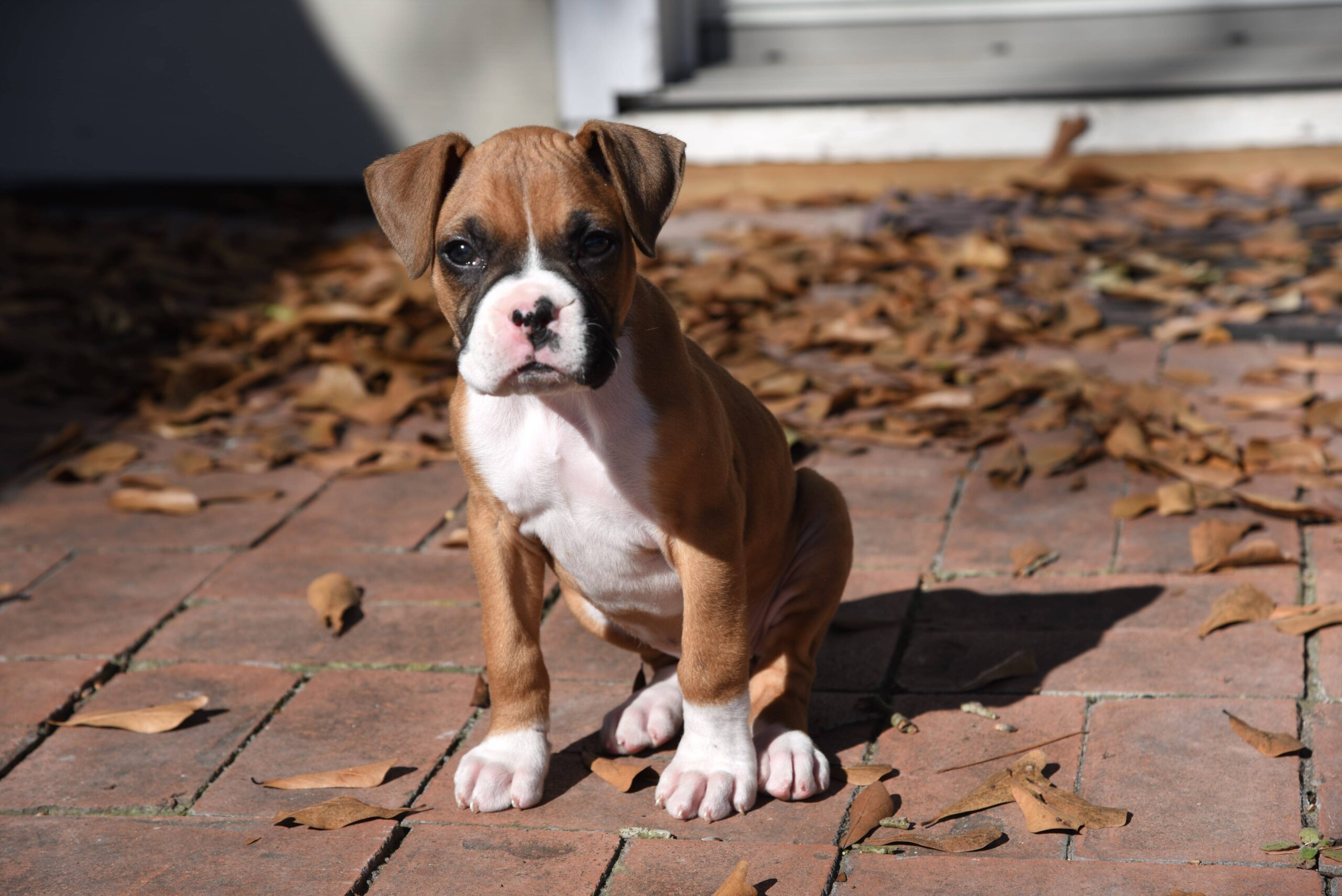Boxer Dog Training
Boxers are great family pets. They can often be referred to as the clown of dogs for their joyful personality and clumsy behaviour, which can be quite entertaining. A Boxer is a loyal companion and they make great guard dogs, alerting their owners of anyone who approaches the property. They tend to love affection from people they meet including children and enjoy an energetic run around with other dogs they meet, making them a great family dog! Learn more about Boxer dog training by reading on.
They are a clever breed and can be quite trainable once you find the right reward to motivate them. The pros of this breed could go on forever, but one of the main things people need to consider with this breed is their high energy levels!
If you do not have an active lifestyle then the Boxer may not be the right breed for you. Boxers are highly energetic and require lots of exercise and mental stimulation. If you are unable to dedicate time to exercising your Boxer, or finding ways to give mental stimulation, then you will find it difficult. They also hold a reputation for being stubborn. This can cause problems when you are trying to get them to do something! You need to have a lot of patience and persistence for when you train your Boxer. They are quick learners, but you have to get through that stubbornness first.
Boxer Dog Training: Top 10 Tips
Exercise before Training
Boxers are an energetic breed and can become distracted easily! To help curb their attention on to you, exercise them before a Boxer dog training session. This will expel excess energy and allow your Boxer to concentrate on the more important things, like the tasty treat that’s in your hand.
Find what your dog likes
Every Boxer is different and has different tastes in their rewards. Some prefer treats and some prefer toys. You need to find out what your dog prefers and use that as a reward! If your dog likes treats, find their favourite treat. If your dog likes toys, find their preferred game. We can use these as rewards for good behaviour.
Reward Accordingly
Depending on the exercise you and your dog are doing, you need to reward accordingly. For example, if you are training your dog to walk to heel down the road, it may not be a good idea to reward them with a game of fetch. Here, it may be best to reward using treats.
Focus on the good stuff
Even though your Boxer may exhibit unwanted behaviour, you still need to focus on the good behaviour. Don’t take their good behaviour for granted. Reward it so you motivate them to do it more. The more you reward the good behaviour, the more likely it will happen again!
Motivation
Boxers are known to be stubborn, but if we motivate them then they are more likely to do what we ask them to do. If we do not motivate our Boxers, then we can’t expect them to come back when called or to walk with you. Bear this in mind when training your dog!
Structure Playtimes
Boxers love to play, however we can’t play with them all day so they need structured play times. Dogs naturally want to play in the evening after their meal. You may notice that at some point in the evening they get a surge of energy and bounce around. This is a good time to play with them. You can also structure other times in the day to play, but ensure you end the game and let them know it’s finished.
One, two, three and go
Boxers are a very sociable breed and often get caught up with wanting to play with other dogs. To help them understand that they do not have to stay and play with every dog, you can teach them the 3-second rule. The rule is they can only meet for three seconds and then they are called away. This allows them a brief amount of time to say hello and then come back to you. If you do this enough, you will condition your dog to say hello and then walk on.
Change Direction
Boxers can be quite excitable when out for walks, and may pull on the lead. To help combat this, you can change direction every time your Boxer walks in front of you. This will teach them to follow you. If you reward them when they are next to you, they will learn that they will get treats for exhibiting this behaviour.
Consistency is key
It is very important to be consistent with the rules you are putting in place. If you do not want your dog on the sofa but someone else allows it, then you will confuse your dog. Everyone in the household has to be reading off the same page in order for your dog to understand what it is you want from them.
Learning to settle
Teaching your dog to settle and relax is important for them. This is so that they can unwind and relax, but also understand how they should behave when you have visitors. You can do this by rewarding your dog for a ‘lazy down’. This is when your dog lays down but rocks their hips over to one side. When your dog is in this position you can reward them and pair it with the word settle. If you wanted to take it a step further, you can teach them to do this in their bed.
All You Need To Know
At Royvon, we love this friendly family breed! We enjoy training Boxer dogs and seeing the progress they can make. Want to learn more? Watch our short YouTube video on all you need to know about Boxers:
Need help with your Boxer dog training? At Royvon, we’d love to help! We offer a huge variety of different training options, so there’s sure to be one that will suit you and your furry friend. Please get in touch to find out more about what we offer.
Want to know more about the different breeds? How about this post about Siberian Huskies next?




